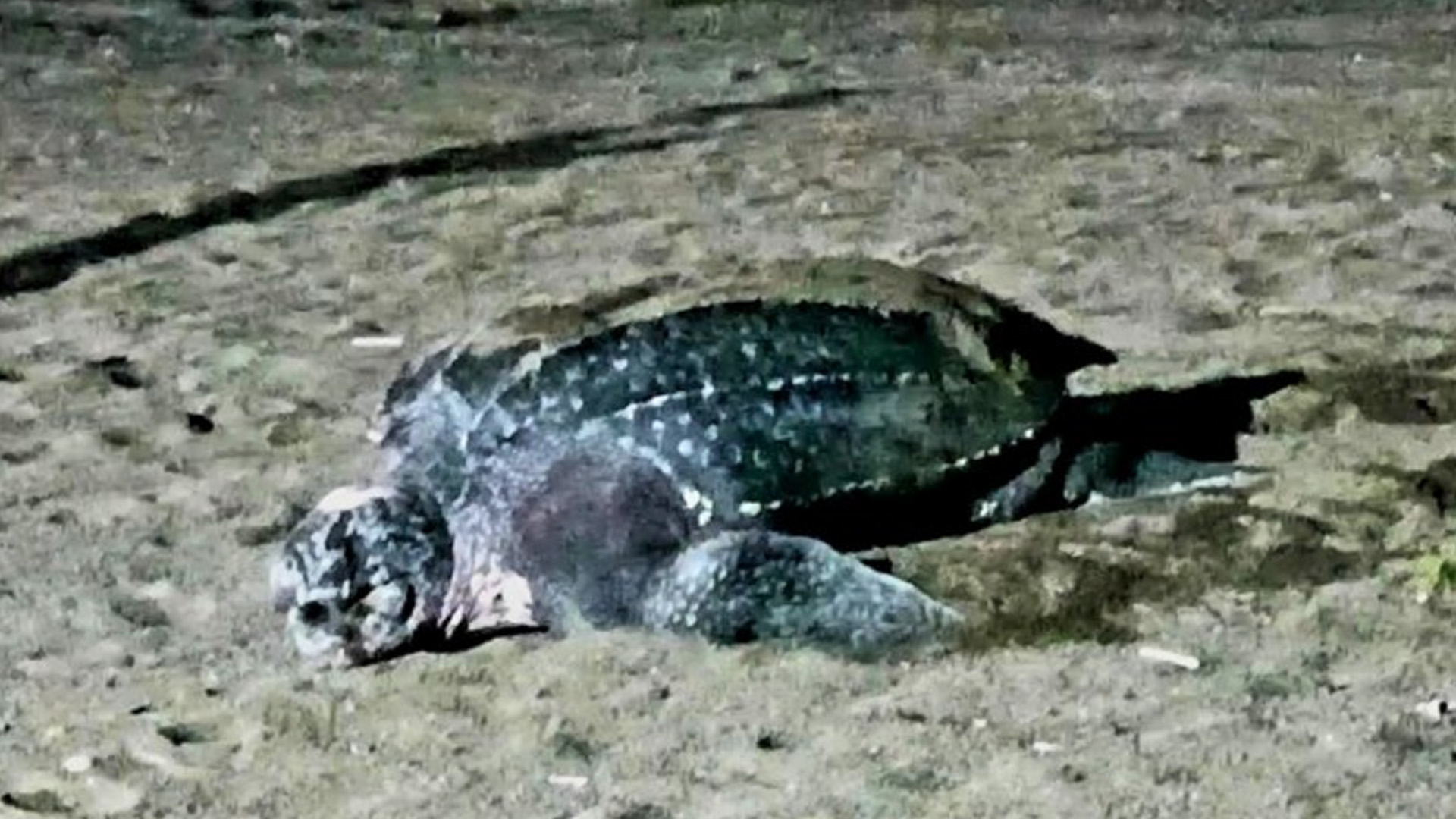The Department of Environment and Natural Resources (DENR) on Wednesday called for the public’s support in safeguarding nesting sites of marine turtles, particularly the critically endangered leatherback turtle (Dermochelys coriacea).
Environment Secretary Maria Antonia Yulo-Loyzaga made the call amid sightings of a leatherback turtle that laid eggs along the shoreline of Barangay Centro, Sta. Ana, Cagayan earlier this month.
The DENR said this is the third time the turtle laid eggs in the area, which is about six kilometers from the Palaui Island Protected Landscapes and Seascapes.
Loyzaga cited a study conducted by the National Oceanic and Atmospheric Administration (NOAA) which revealed that sea turtles take 20 to 30 years to reach maturity and can nest multiple times during their lifetime.
“When a female sea turtle is ready to lay eggs, she returns to the nesting beach where she was born according to NOAA. This gives us more reason to pursue our goal to put up a marine scientific research station in the said town,” Loyzaga said.
The National Wildlife Federation said the leatherback turtle is the most unique of all sea turtle species, being the only living member of the family Dermochelyidea, a family of reptiles that has seven extinct genera and one extant genus.
Leatherback turtles have a leathery layer of black or brown skin.
They are the largest of the seven living sea turtle species, growing to more than 6.5 feet (two meters) in length and weighing up to 2,000 pounds (900 kilograms).
The DENR-2 (Cagayan Valley) said a security guard of a resort reported the presence of the turtle in the area in early June.
With the help of the local fisherfolk and conservationist groups, the leatherback sea turtle was saved and its eggs, which are expected to hatch by August, are now in a temporary sanctuary.
Loyzaga has ordered DENR-2 executive director Gwendolyn Bambalan to ensure strict protection of the area and deploy personnel to monitor the nesting site on a 24-hour basis.
“We are expecting about a hundred hatchlings in two to three months so we appeal for the support of the coastal community, the local government, and law enforcement agencies to help the DENR protect the nesting sites,” Bambalan said. (PNA)




